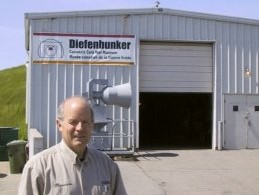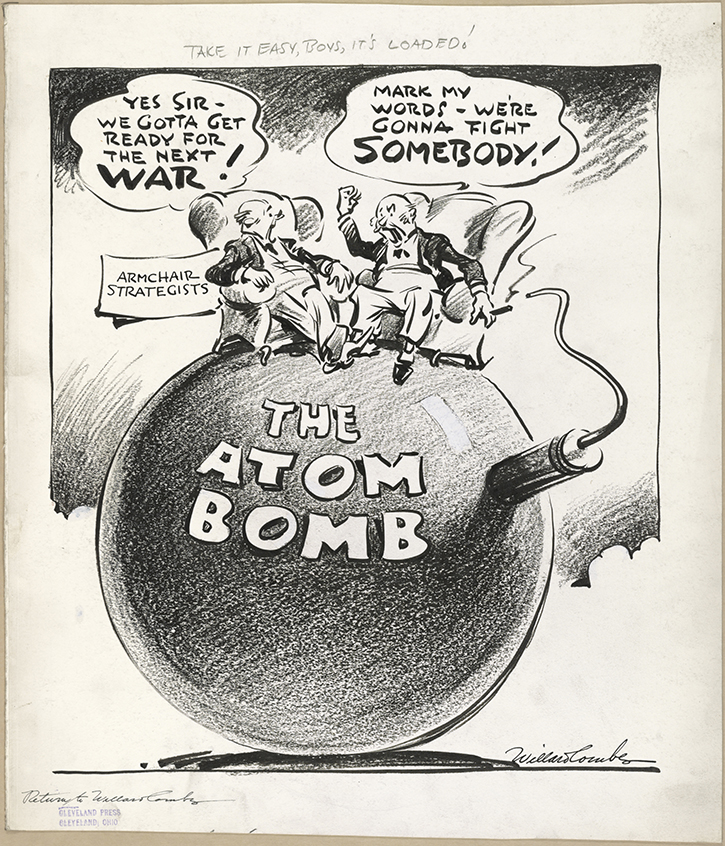This website is dedicated to the hundreds of volunteers who have worked very hard since the “Diefenbunker became Canada’s Cold War Museum in 1998 to make publicly and widely available as much information as possible about the Cold War threat and how Canada dealt with it internally and externally. Farther down in this section is a DRAFT list of those volunteer folks that, in my opinion have contributed significantly to the continued existence and on -going development of ‘the bunker’. I have probably missed many but will try to update the list as I am made aware of their contribution.
………………………………………………………………………………………………………………………………..

I have accessed a wide range of sources as I assemble this site. Much of the material is my own or has been provided by friends and colleagues, some of it was acquired as I was a volunteer with the the developing Diefenbunker Cold War Museum in the course of many years of researching and collecting information and artifacts for the Museum’s collections. Other material is from websites that I reviewed and respect for their accuracy and comprehensiveness. Regarding the latter I have tried to credit the sources when extracting material or making links. If you have any problems with any of this please explain your concerns by emailing me at [email protected] and I will try to address your issues asap. Thank You.
What are my qualifications for creating this website? During much of the Cold War I was first as a mechanic in the RCAF and later in the Canadian Army as a combat engineering officer. In the late 60s/early 70s I served with 4CMBG Germany and attended RMCS in the UK. Later I spent a year with the UN on the Indian Sub Continent. I also attended the Army Staff College (Kingston) and the Forces Staff College (Toronto). In the early 80s I retired from the Canadian Forces (as a LCol) and went to work in the Public Service of Canada with Emergency Preparedness Canada. There as Director of Emergency Operations Coordination, I found my responsibilities included a number of programs supporting civilian governmental operational readiness for nuclear war, including the Continuity of Government Program and its associated Emergency Government Facilities ‘bunkers’ across the country. The “flagship” of those fifty plus facilities was the Central Emergency Government Headquarters located in the nuclear bomb resistant underground shelter at Canadian Forces Station Carp, Carp, (somewhat disrespectfully – known even then as the ‘Diefenbunker’). Despite the seriousness of the Cold War and the ever present threat of nuclear attack, not much money was (or ever has been) available for really effective Canadian civil defence preparedness. However a small group of federal, provincial and municipal officials took the threat seriously and did their best to prepare for it in the face of public skepticism, political neglect and minuscule financial support. I will do my best to ensure that the content of this site is complete and accurate to the best of my ability and reflects their efforts.

As for my background, I was born during WWII and was involved in both the Military and Civilian aspects of the Cold War during most of my working life. I’ve always had an personal interest in that turbulent and very dangerous period of human existence. While still in High School in the late ’50s I joined the RCAF Reserve in Montreal where as an airframe tech at St. Hubert Air Force base I got to work on F 86 Sabres and frequently to watch our neighbor regular force squadrons’ Canadian CF 100 aircraft be armed and to scramble on interception missions.

Soviet Bear and Bison bombers potentially carrying nuclear bombs were constantly probing our northern frontiers and needed to be checked out. Always in the back of everyone’s minds in those days was the possibility of a nuclear war. I recall practicing ‘duck and cover’ exercises in school. Sirens were occasionally sounded for test purposes. Newspaper cartoons satirized the development of ‘A’ Bombs to ‘H’ Bombs. Spy versus spy stories abounded. Black and white TV broadcast actual “A’ bomb tests from Nevada. In the early 1950s our family huddled around the 15 inch TV screen to watch them. NATO and the Warsaw Pact were toe-to-toe in every possible aspect of military, political, geographical and social competition (and often confrontation) through the 1950s to the end of the 1980s

As time passed the ideological struggle between communism in the east and democracy in the west grew increasingly tense. It became apparent to the political leaders on both sides and to scientists and analysts as well as to much of the planet’s population, that an all out nuclear attack by either side would have enormous consequences. Civilization, even the very existence of all life on earth would be threatened by the use of nuclear weapons.
After 24 years in the military, in 1983 I retired and became a civilian in Emergency Preparedness Canada for 14 years. There as the Director of Emergency Operations Coordination, I found myself much more involved in Civil Defence than I had expected. As noted above one of my responsibilities was the civil operational readiness of Canada’s Continuity of Government Program and its’ Emergency Government Facilities scattered across the country. These ‘bunkers’ were Integral components of Canada’s Civil Defence arrangements so my interests expanded to include all of the other CD programs and preparations.

we came very close!
My motivation for creating this website is strong. Since retiring in from EPC in 1997, I have been quite involved as a volunteer trying to assist in the development of the former Central Emergency Government HQ, in Carp, Ontario (the ‘Diefenbunker’) as Canada’s Cold War Museum. I am extremely disappointed in the way the museum has developed over the last decade. In 2008 our original management-oriented Board of Directors decided to become a governance board. This in my opinion was a mistake as it has left the running of the museum in the hands of inexperienced people who know very little about the Cold War and seem to want to turn the bunker into a entertainment oriented fun place for children and adolescents as opposed to an actual Museum of the Cold War for all to learn from. Consequently I’ve decided to create this website with as much of the real, relevant to the Cold War-and-Canada background information as I can find.
As I mentioned in the introduction, I am dedicating this website to the hundreds of volunteers who have worked very hard over the years since the “Diefenbunker became Canada’s Cold War Museum, to make available to the public information about what the Cold War threat was all about and how Canada dealt with it internally and externally. Here is a tentative a list of those folks that, in my opinion have contributed significantly to the continued existence and on -going development of ‘the bunker’. If I have missed anyone please I apologize and ask that you contact me with the appropriate information. Thanks!
